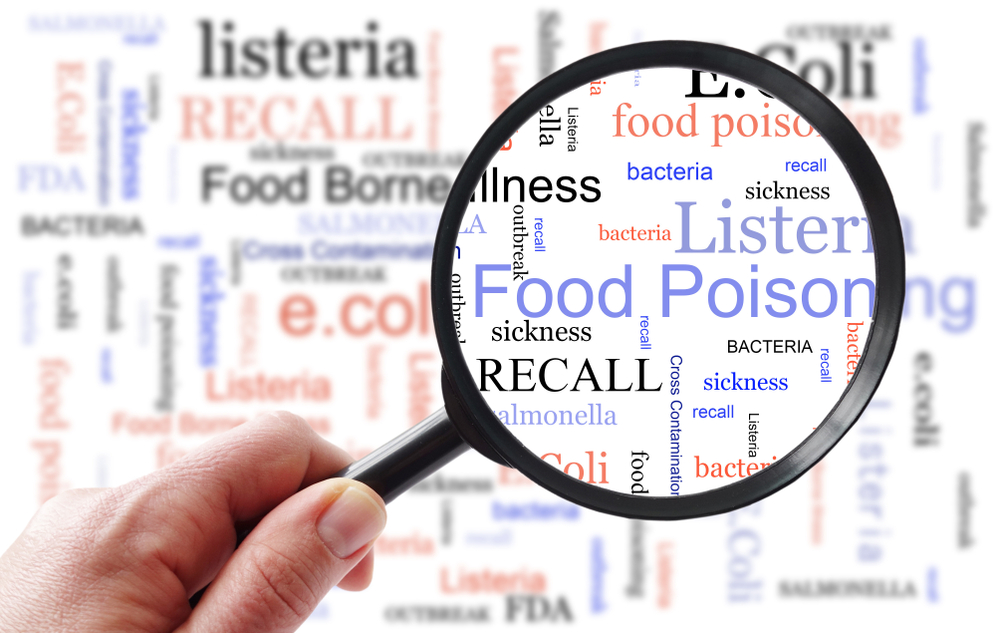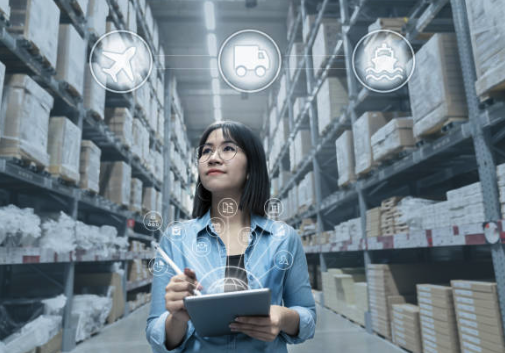
Francine Shaw is a food safety specialist, podcaster, and co-founder of My Food Source with over 20 years of experience in the food service industry. She is an avid author having written hundreds of articles for National Trade magazines and has appeared on Dr. Oz, the BBC World Series Radio and iHeart Radio as a food safety expert.
In her article reproduced below, written for Food Safety News, July 23, 2023, she discusses the use of Artificial Intelligence (AI) in the food industry as it relates to food safety issues.
“Food safety is a significant concern for both consumers and the food service industry. Ensuring that the food we consume is safe to eat is of utmost importance, and the application of Artificial Intelligence (AI) in the food industry has been widely recognized as a promising solution to address this issue.
Building consumer trust is an essential effort. The CDC estimates that 48 million people get sick,128,000 are hospitalized, and 3,000 die from foodborne diseases in the US each year.
As consumers continue to read frightening headlines about food recalls, foodborne illness incidents, and other food safety breaches, they’re demanding transparency more than ever before. The food industry should, therefore, continue to explore the potential applications of AI in food safety to ensure that consumers can have greater confidence that the food they consume is safe.
As AI grows more affordable and accessible for organizations of all sizes and budgets, it will become an increasingly essential tool to boost transparency, verification, validation, traceability, communication, and safety throughout the entire supply chain.
Predictive modeling and quality control
AI can help enhance food safety in several ways. Predictive modeling is one of the most prominent applications of AI in the food service industry. AI algorithms can predict potential foodborne illness outbreaks by using data gathered from various sources, such as environmental factors, ingredient quality, processing operations, and historical records of contamination. The information obtained can be used to proactively take action to prevent such outbreaks from happening.
Another way in which AI can increase food safety is through food quality control. AI algorithms can analyze images of food and packages in real-time to detect abnormalities, such as missing labels or torn packaging. This helps identify contaminated products before they reach store shelves (or consumers).
Food safety can also be enhanced through AI-powered automated food processing systems. By using sensors and cameras, these systems can detect and correct issues like temperatures, liquid levels, gas flow, humidity, and even food hygiene that could lead to food contamination during manufacturing and processing.
Additionally, AI can be used to trace the origins of food products. Using technology and AI algorithms, food producers can track food products from farm to table, providing consumers greater transparency and accountability in the food supply chain.
Ways that AI will improve food safety
Creating AI with verification and validation checkpoints is essential to improving traceability within the supply chain.

AI will improve food safety throughout the supply chain by:
- Improving communication. Good communication is a critical aspect of verification, validation, and traceability. Strong, accurate, real-time communication is essential throughout the food chain to maximize safety, transparency, and trust.
- Boosting transparency and validation. Everyone in the supply chain must understand the importance of validation and transparency and the role they play. This will help build consumer trust and confidence in the food produced.
- Making the process faster and easier. AI will minimize the number of steps it takes to get validated and the number of people suppliers must talk to during the process. As a result, more suppliers will participate.
- Reducing redundancies. AI will decrease the number of databases that companies have to work with, reducing the redundancies that come with duplicating information in each database. Since these redundancies waste time, labor, and money, AI will help the processes be more efficient, cost-effective, and streamlined, reducing administrative burden dramatically.
- Simplifying the process. The newest AI technologies make these systems simple, straightforward, and multi-faceted rather than complicated with minimal functionality. It’s time to work smarter, not harder!
Reliability and cost factors
However, as with any technology, the use of AI in food safety has its challenges. One major concern is the reliability of AI models. AI models are only as good as the data that is entered, and if the data is flawed or biased, the AI model will produce unsatisfactory results.
Additionally, there are concerns about the cost of implementing AI in the food industry and the potential for job loss due to automation. Though the use of AI in food safety should not replace human labor entirely. For example, food safety inspections and quality testing will continue to require human involvement to ensure the food meets safety standards and regulations. AI is also expected to create job opportunities in various fields, such as software engineering, data science, and quality control.
However, it’s important to note that the affordability and accessibility of AI may depend on various factors, such as the type of technology, infrastructure availability, and cost of implementation. Tech investments can also have a tremendous ROI, as AI can increase efficiency and reduce costs, and there are even currently affordable options for small businesses.
Despite these challenges, the potential benefits of using AI to enhance food safety are significant. By providing real-time monitoring, detection, and prediction, AI can help to prevent foodborne illness outbreaks, reduce food waste, improve sustainability, and enhance accountability in the food supply chain.”
Source:
Francine Shaw氏は食品サービス業界で20年以上の経験を持つ食品安全性の専門家で、ポッドキャスターであり、My Food Sourceの共同創設者でもあります。これまでに全米の業界誌に数百本という記事を寄稿してきたほか、人気のテレビ番組「Dr. Oz」やBBCラジオ、iHeart Radioなどの出演歴もあります。
2023年7月23日付けのFood Safety Newsに掲載された記事では、食品安全性の問題に関係して業界で人工知能(AI)がどのように使われているかについて論じました。その記事を以下に転載します。
—以下はFood Safety Newsの引用—
食品安全性は、消費者と食品サービス業界の両方にとって重大な懸念です。私たちの食べる食品の安全性を確認することは何よりも重要であり、この問題に対応する有望なソリューションとして食品業界におけるAIの活用が広く認識されてきました。
消費者の間に信頼感を構築することは、必要不可欠な取り組みです。米国の疾病予防管理センター(CDC)では、米国で毎年4,800万人が食中毒にかかり、うち12万8,000人が入院、3,000人が死亡していると見積もっています。
食品回収、食中毒、その他の食品安全性の問題発生の恐ろしいニュースを見続けてきた消費者は、今まで以上に透明性を要求するようになっています。このため食品業界は、食品安全性にかかわるAIの活用法を引き続き模索して、消費者が自分の食べるものの安全性にもっと自信を持てるようにしていくべきです。
規模も予算も多様な組織にとってAIが安価で使いやすくなっていることから、サプライチェーン全体にわたる透明性とトレーサビリティを確立し、認証や検証を実践し、確実にコミュニケーションを取り、食の安全を実現するうえで、AIがますます欠かせないツールになっていくでしょう。
予測モデルと品質管理
AIは、いくつかの方法で食の安全性を向上させることができます。予測モデルは、食品サービス業界におけるAIの活用法として最もよく知られた方法のひとつです。AIのアルゴリズムが、さまざまな場所から収集したデータを使用して、食中毒発生の可能性を予測します。環境要因、原材料の品質、加工処理の状況、過去の汚染の記録といったデータが使われます。これらの情報を使うことで、予防的に行動を取って食中毒の発生を防止できるようになります。食品安全性を向上させるもうひとつのAIの活用法は、品質管理です。AIのアルゴリズムがリアルタイムに食品やパッケージの画像を分析し、ラベルの不備やパッケージの破損といった異常を検出します。店頭(や消費者)に届く前に汚染された製品を特定するのに役立ちます。
また、AIを搭載した食品加工の自動システムも、食品安全性の向上に寄与します。これらのシステムは、センサーやカメラを使用して、温度、液量、気体流、湿度などの問題を検出し修正できるだけでなく、食品の生産・加工中に汚染を引き起しかねない衛生問題も検出できます。
さらに、食品の原産地のトレーサビリティを実現する目的でもAIを使うことができます。農家から消費者へと至る間に製品を追跡して、食品サプライチェーンの透明性と説明責任を向上させることができます。
AIはどのように食品安全性を向上させるか
サプライチェーン内のトレーサビリティを向上させるには、認証や検証のチェックポイントにAIを導入することが重要です。
AIは次のような方法でサプライチェーン全体にわたる食品安全性を向上させるでしょう。
- コミュニケーションを向上させる:綿密なコミュニケーションは、認証、検証、トレーサビリティの重要な側面です。安全性と透明性を最大限に高め、ひいては信頼を得るうえで、食品サプライチェーン全体にわたって正確かつ詳細に時機を逃さず情報を伝達することは不可欠です。
- 透明性と検証の確実性を向上させる:すべてのサプライチェーン関係者が透明性と確実な検証の重要性を理解し、自分が果たす役割を認識しなければなりません。これが食品に対する消費者の信頼感につながるでしょう。
- プロセスを簡易化・迅速化する:AIにより検証に必要な工程数が減り、プロセスの間にサプライヤーが連絡しなければならない相手の数も最小限に抑えられるでしょう。結果として、より多くのサプライヤーが参加するようになります。
- 重複作業を減らす:さまざまな企業が管理しなければならないデータベースの数が減り、それぞれのデータベースに同じ情報が重複して記録されることも減るでしょう。このような重複は時間と労力と費用の浪費にほかなりません。結果としてプロセスが合理化され、効率とコスト効果が向上して、管理事務の負担が大幅に軽減されます。
- プロセスを単純化する:最新のAI技術は、これらのシステムをシンプルで分かりやすく、多面的なものへと向上させてくれます。かつてのように使い勝手の悪い複雑なシステムではありません。がむしゃらに働くのではなく、スマートに働く時代です!
信頼性とコストの要因
ただし、どんな技術にも共通することですが、食品安全性のためのAI活用にはそれなりの課題があります。大きな懸念はAIモデルの信頼性です。AIモデルの良し悪しは取り込むデータの良し悪しによりますから、データに欠陥や偏重があれば、AIモデルの出力する結果も不満足なものになります。また、食品業界にAIを導入するための費用、および自動化に伴う雇用喪失の可能性に関しても懸念があります。食品安全性にAIを使用するからといって、人間の介入を完全に排除すべきではありません。例えば、食品安全性の点検や品質検査に際しては、今後も人間が関与することで、安全性基準と規制要件を確実に満たす必要があります。またAIは、ソフトウェアエンジニアリング、データサイエンス、品質管理などのさまざまな分野で雇用を創出することも期待されています。
とはいえ、AIがどこまで安価に利用しやすくなるかは、技術の種類、インフラの整備状況、導入費用など、各種要因に左右される可能性があります。AIが効率化とコスト削減をもたらすことから、技術投資が多大なROIをもたらす可能性もありますし、すでに中小企業向けの安価な選択肢も提供されています。
これらの課題はあるものの、食品安全性にかかわるAIの活用には大きな潜在性があります。AIはリアルタイムのモニタリング、検出、予測をもたらすことで、食中毒の発生を防止し、食品廃棄物を削減し、サステナビリティを高め、食品サプライチェーンの説明責任を明確化するのに役立つでしょう。
出典:
